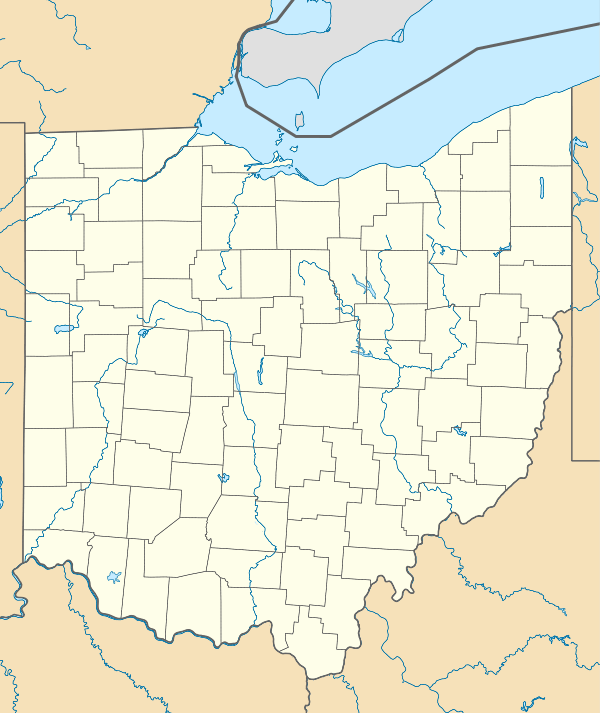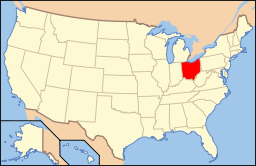Glendale Cemetery
|
Glendale Cemetery | |
|
A mausoleum on the main drive | |
  | |
| Location |
150 Glendale Avenue Akron, Ohio |
|---|---|
| Coordinates | 41°5′2″N 81°31′44″W / 41.08389°N 81.52889°WCoordinates: 41°5′2″N 81°31′44″W / 41.08389°N 81.52889°W |
| Area | 88 acres (36 ha) |
| Built | 1839 |
| Architect | Albert Sargent; et al. |
| Architectural style | Rural cemetery |
| NRHP Reference # | 01001063[1] |
| Added to NRHP | September 28, 2001 |
Glendale Cemetery is a cemetery and historic district located in Akron, Ohio. It was added to the National Register of Historic Places in 2001.[1]
History
Glendale Cemetery was founded in 1839 by Dr. J.D. Commins. Here statues of prominent citizens, an avenue of stately mausoleums and a collection of headstones tell the story of Akron’s past. Originally known as Akron Rural Cemetery, Commins modeled the design of the cemetery after Boston’s Mount Auburn Cemetery, which he visited in 1838. Glendale is a picturesque romantic landscape with its curving roads, use of promontories to create vistas and a variety of architectural styles that draw upon ancient building forms. Mausoleums are modeled after Egyptian, Greek and Roman temples or Gothic churches. Nineteenth-century accounts described Glendale as “beautifully laid out in romantic drives and walks” and note its role as an area park and tourist destination.[2]
Originally, the cemetery had a stream and two bodies of water—Willow and Swan Lakes. Due to the increased development surrounding the cemetery during the late 19th century, the natural spring that fed the lakes dried up. The superintendent of the cemetery at that time proposed running a pipe to the Ohio and Erie Canal to re-water the lakes, but this was never realized. Today the open space or Great Meadow recalls the scale of Swan Lake and several mausoleums have small foot bridges that once crossed over the stream fronting them. Distinct sections of the cemetery are devoted to the Masons, Akron’s Jewish community and infants and children. The Civil War is prominently commemorated in Glendale Cemetery. The Buckley Post of the Union Army has a large memorial marker surrounded by 50 headstones located on the northern plateau. The 1876 Gothic Revival style Memorial Chapel was constructed by the Buckley Post and has been recently restored.[2]
Notable interments
- Frank Seiberling, early 20th century industrialist. Founder of the Goodyear Tire and Rubber Company and the Seiberling Rubber Company.
- John Buchtel, businessman and founder of Buchtel College, the predecessor of the University of Akron.
- Ohio Columbus Barber, industrialist and philanthropist. Founder of the Barber Match Company and the city of Barberton, Ohio.
- John F. Seiberling, U.S. Congressman and grandson of Goodyear founder F.A. Seiberling.
- Lewis Miller, philanthropist and inventor.
- William Hanford Upson, 19th century politician, lawyer, and judge.
- George Washington Crouse, U.S. Congressman.
References
- 1 2 National Park Service (2009-03-13). "National Register Information System". National Register of Historic Places. National Park Service.
- 1 2
 This article incorporates public domain material from the National Park Service document "Glendale Cemetery".
This article incorporates public domain material from the National Park Service document "Glendale Cemetery".


